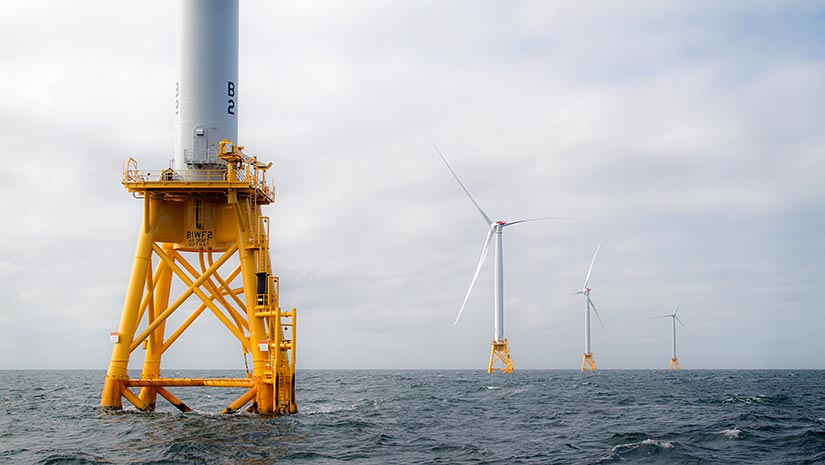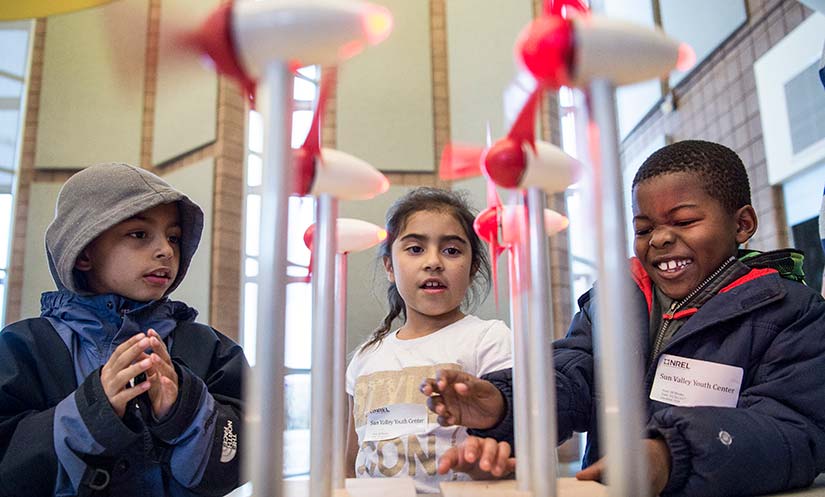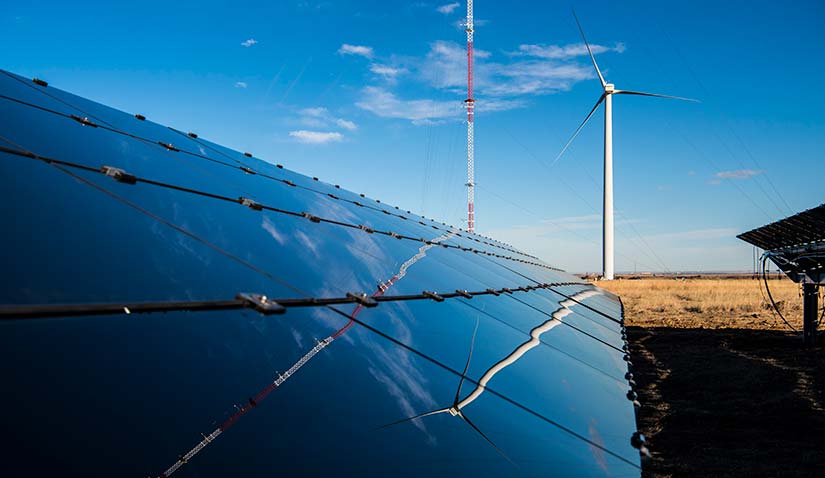The Leading Edge: June 2020 Wind Energy Newsletter
In this edition: NREL's research partnerships are shaping the U.S. offshore wind industry; we prepare for Global Wind Day on June 15, and we take a look at NREL's international wind research.
News Stories

Scientific Collaboration Buoys Future of Offshore Wind
Offshore wind, with its potential for domestic electricity-generating capacity of more than 2,000 gigawatts, could supply enough electricity to meet the needs of the entire United States two times over. NREL researchers are working with partners to make reliable, affordable, and accessible offshore wind energy a reality.
NREL Projects Headline Wind R&D Newsletter
The U.S. Department of Energy Office of Energy Efficiency and Renewable Energy Wind Energy Technologies Office (WETO) recently released its Spring 2020 Research and Development newsletter, featuring several NREL-led projects.
From workforce development programs that prepare young people for jobs in the wind industry to a new reference turbine that expands capabilities to assess offshore designs, the featured projects show how NREL research has helped make wind energy one of the top renewable energy generation sources in the country.
NREL Experts Lead Global Wind Efforts
Global Wind Day, which will be celebrated worldwide on June 15, offers an opportunity to highlight NREL's leadership in international wind energy research.
On behalf of the U.S. Department of Energy, NREL represents the United States by participating in 16 of the 18 International Energy Agency Wind Technology Collaboration Programme (IEA Wind) research tasks. NREL Wind Energy Laboratory Program Manager Brian Smith serves as vice chair of the IEA Wind Executive Committee, and NREL researchers lead or co-lead eight IEA Wind research efforts.
Supporting Teachers and Students in Distance Learning
Adhering to practices of social distancing has drastically transformed many aspects of our day-to-day life, including how students and teachers approach education.
NREL is supporting distance learning for K–12 students through innovative programs funded by WETO's Wind for Schools project. These programs provide important resources as parents and educators struggle to find a balance in what has been dubbed the "new normal."

On the Radar
Demonstration Shows Wind Energy Can Help Maintain Reliable Electricity System
New research has demonstrated that commercial wind power plants can supply more than just power—they can help grid operators maintain a reliable electricity system.
With support from WETO, NREL collaborated with Avangrid Renewables, the California Independent System Operator, and General Electric on a three-day evaluation to show that large, utility-scale wind power plants can provide essential grid services that ensure smooth and continuous flow of electricity on the power grid.
The demonstration, conducted at Avangrid's 131-megawatt Tule Wind Farm in Southern California, proved that, like solar, wind resources can be used to actively manage the electric grid with higher levels of renewable generation. The findings will inform future research on the use of inverter-based resources to increase the variety of reliability services and accelerate progress toward a sustainable electric grid.
Read the full story from the Office of Energy Efficiency and Renewable Energy.

Grand Challenges in the Science of Wind Energy Webinar
Harvested by advanced technical systems honed over decades of research and development, wind energy has become a mainstream energy resource. However, continued innovation is needed to realize the potential of wind to serve the global demand for clean energy. Please join Senior Research Fellow Paul Veers Wednesday, June 24, from 9 to 10 a.m. MT for a webinar in which a panel of wind energy science and technology leaders will outline three interdependent, cross-disciplinary grand challenges underpinning this research endeavor. Learn how tackling these challenges could enable wind power to provide as much as half of our global electricity needs and beyond.
Please email Alexsandra.Lemke@nrel.gov for details on how to attend.
Downwind – In Case You Missed It
Exascale: Cleaner-Burning Gasoline Engines, Cities Powered by Wind, Nuclear Reactors That Fit on a Tabletop
A new article from HPC Wire details how exascale computing's ability to synthesize massive amounts of data into detailed simulations can enable scientific breakthroughs in several fields, including wind energy. Senior NREL wind researcher Michael Sprague is quoted in the article discussing how exascale computing can better position wind turbines to maximize energy production, cut costs, and make the best use of available terrain.
Renewables Can Sometimes Resolve Grid Variability Better Than Fossil-Fuel Plants Can: NREL Analyst
NREL Principal Energy Analyst Paul Denholm is featured in a Forbes article, discussing how renewables can provide many of the ancillary services needed to ensure the reliability of the electric system. Focusing the discussion on wind energy, Denholm speaks to wind's ability to quickly ramp up and down, which helps meet changes in demand or frequency. The article was sparked by Denholm's recent "Grid Services from the Modern Wind Turbines: Engineering and Economics" webinar, which is part of NREL's Wind Workforce Development Webinar Series.
Over $10 Million Awarded for Projects Advancing Offshore Wind Research and Development
The National Offshore Wind Research and Development Consortium recently announced selection of 12 offshore wind research and development technology projects. NREL, along with collaborators DNV GL and the Business Network for Offshore Wind, was selected to create a comprehensive U.S. supply chain roadmap to achieve 20 gigawatts of U.S. offshore wind by 2035.
NREL Wind Program Publishes Midyear Accomplishments and Performance Report
NREL's wind program published the "Wind Energy Midyear Performance and Accomplishments Report," an overview of the achievements the lab delivered on behalf of WETO and other partners during the first and second quarters of Fiscal Year 2020. The report highlights activities that enable the innovations to advance U.S. wind systems, address market and deployment barriers, and drive down costs with more efficient, reliable, and accessible wind energy.
Publications
A Methodology for Reliability Assessment and Prognosis of Bearing Axial Cracking in Wind Turbine Gearboxes
This Renewable and Sustainable Energy Reviews article describes an interdisciplinary methodology to calculate the probability of failure for bearing axial cracking, the dominant failure mode in the intermediate and high-speed stages of many wind turbine gearboxes. Through statistical analysis of historical data, a proposed methodology enables reliability assessment of axial cracking in individual wind turbine bearings and connects the reliability forecast with turbine design and operations.
Comparing Offshore Wind Energy Procurement and Project Revenue Sources across U.S. States
This report systematically analyzes offshore wind energy support regimes across U.S. states, comparing several dimensions, including statutory authority, solicitation procedures, procurement goals and awards, and the structuring of physical and transactional delivery of energy services. Report findings are intended to inform validation of bottom-up cost estimates and a future research effort to comparatively assess revenue profiles of U.S. and global offshore wind projects.
Share

